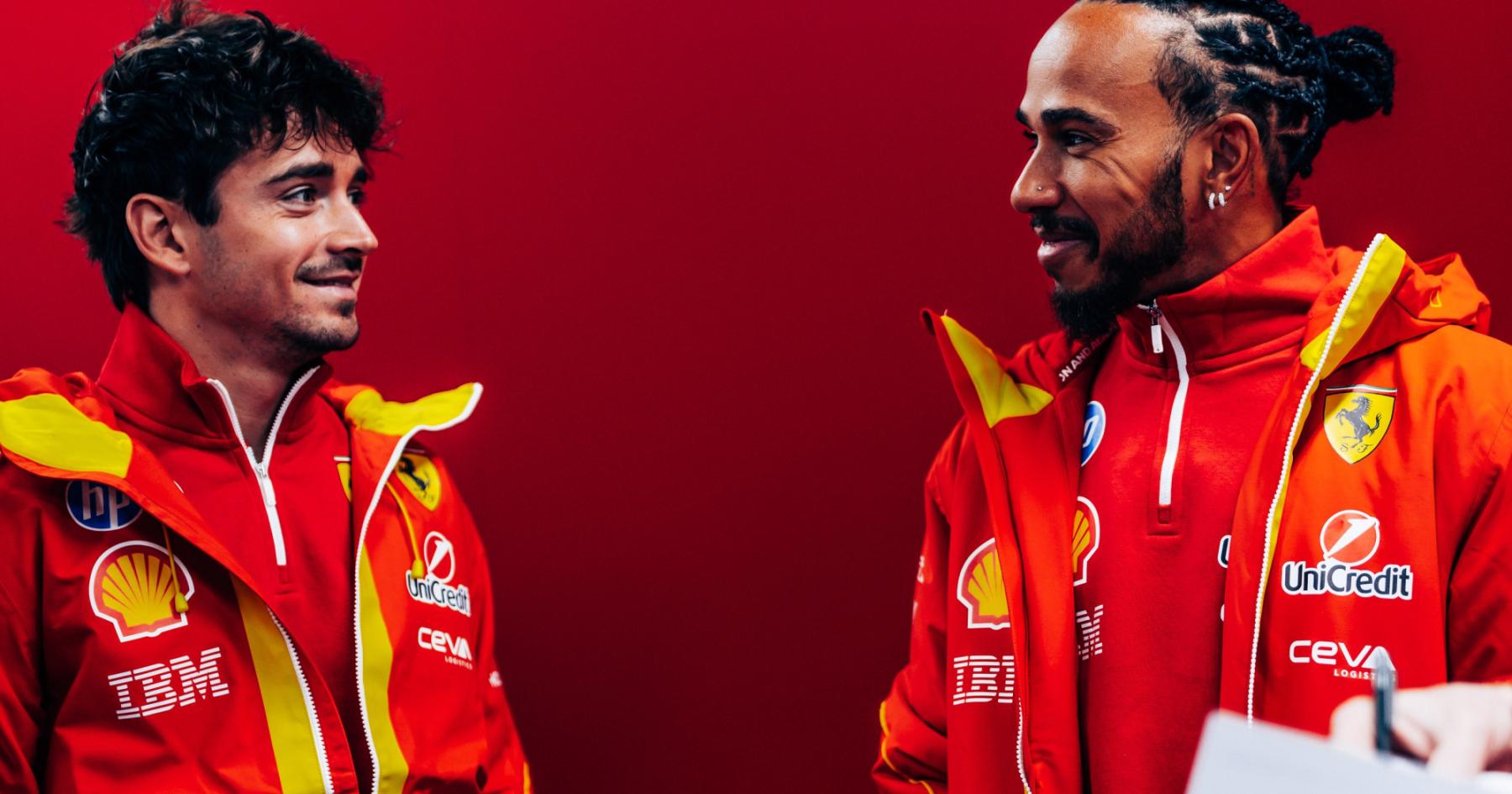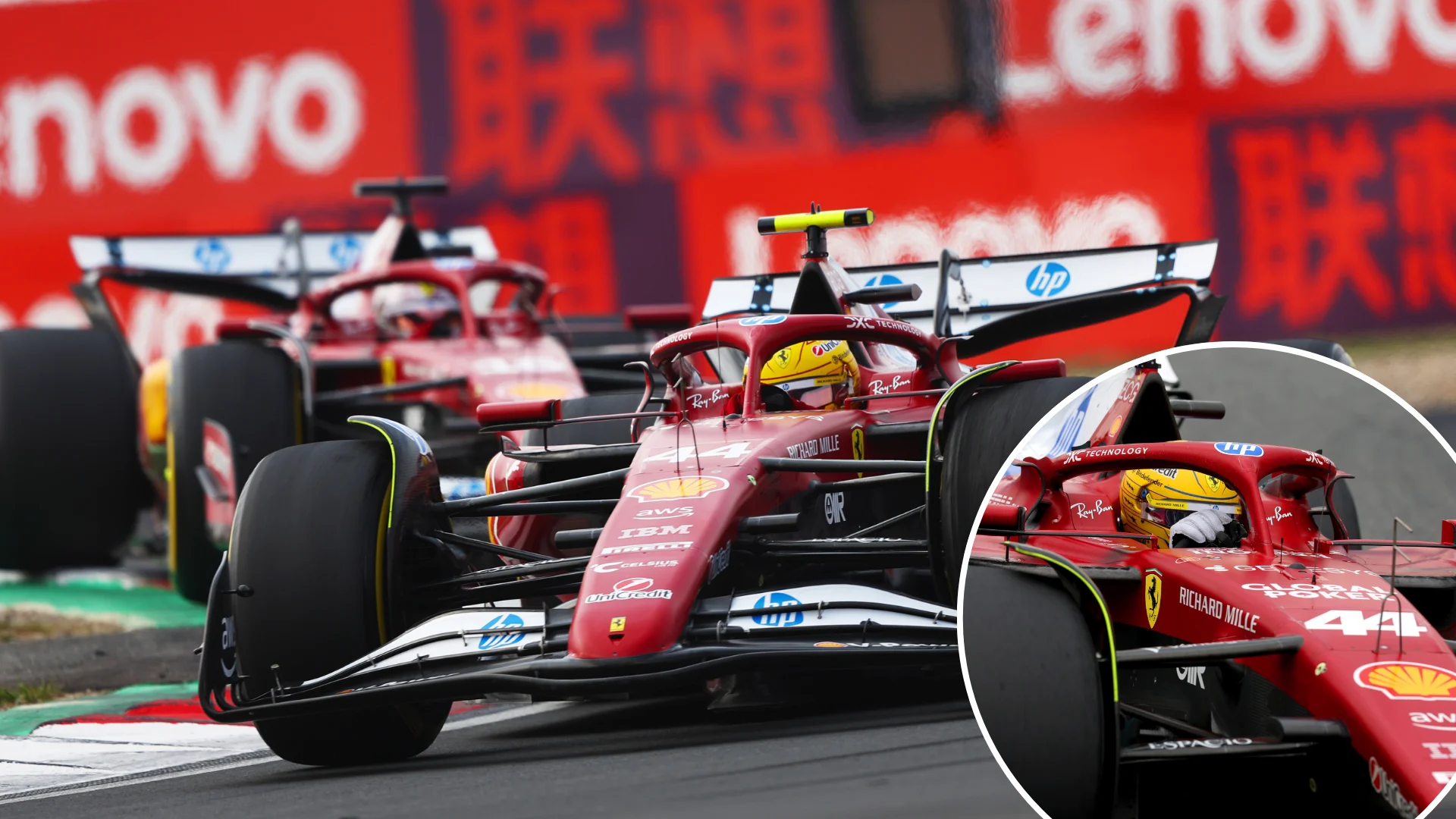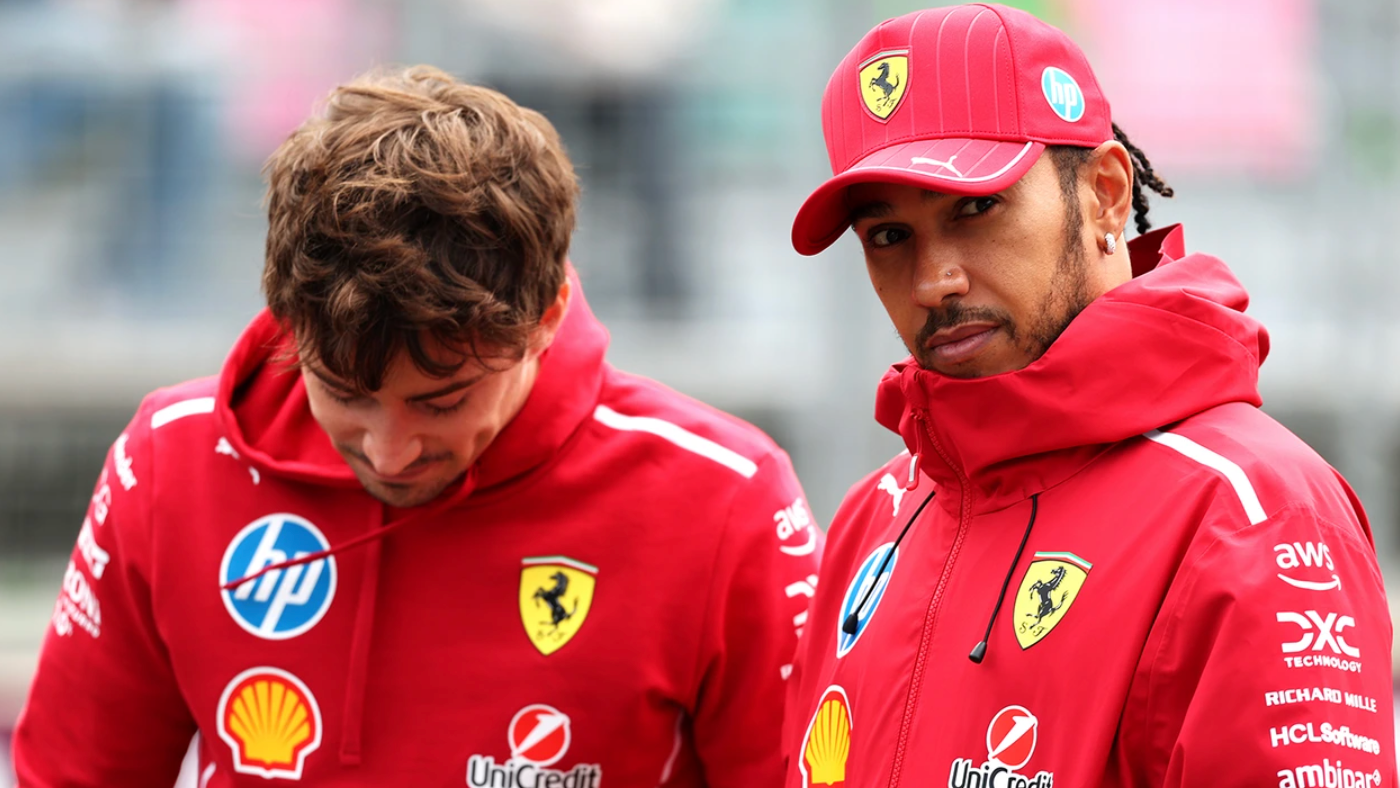The Singapore Grand Prix, once anticipated as Ferrari’s chance for redemption, ultimately became irrefutable proof of the deep-seated crisis engulfing the legendary team. From their position as championship contenders, Ferrari now watches its drivers finish in sixth and eighth place while rivals pull further ahead. More alarmingly, Charles Leclerc has candidly confessed he sees no signs that their season will improve.
Under the dazzling lights of Marina Bay, seven-time world champion Lewis Hamilton experienced a terrifying moment unlike any other in his nearly two-decade career. In the final laps of the Singapore Grand Prix, while hunting down Mercedes for fifth place, the unthinkable happened: his brake pedal went to the floor, completely unresponsive. Hurtling down the Esplanade straight at over 250 km/h, Hamilton pressed the brake and got nothing.
“I had no brakes, man! This has never happened to me before,” Hamilton’s voice crackled over the radio, strained with disbelief and shock. For a driver who has spent nearly two decades mastering every scenario Formula 1 can throw at him, that sentence hit like a thunderclap. This wasn’t mere frustration; it was sheer astonishment. A seven-time world champion, reduced to helplessness by a machine that refused to cooperate.

The chaos began from what seemed like a moment of brilliance for Ferrari. After a disappointing qualifying session, the team rolled the dice on an aggressive late-race strategy, fitting Hamilton with fresh soft tires for a final charge. For a few glorious moments, it worked. The SF25 was flying through Marina Bay’s tight corners, with Hamilton taking huge chunks of time out of Leclerc and Kimi Antonelli, at one point lapping 4 seconds faster. Ferrari even instructed Leclerc to move aside—a rare show of trust as Hamilton went on the hunt. It was the kind of late-race attack that could have rewritten the headlines.
Then, with just three laps to go, the dream disintegrated. The brakes failed. Hamilton was forced to coast, to cut corners, to do whatever it took just to survive. When the FIA reviewed the footage, they saw multiple track limit violations. Hours later, the verdict came: a 5-second time penalty, dropping Hamilton from seventh to eighth and handing the position to Fernando Alonso. But Hamilton’s brake failure was merely a symptom of a much deeper problem at Ferrari, and what Charles Leclerc revealed after the race suggests things aren’t going to get better anytime soon.
While Hamilton battled his failing brakes, his teammate, Charles Leclerc, drove a lonely race to sixth place, finishing 46 seconds behind winner George Russell. It was his fifth consecutive race without a podium, his last rostrum appearance coming at the Belgian Grand Prix. What Leclerc said after the race was stunning in its honesty: “It’s tough, it’s very tough. We are not strong at the moment and we are struggling massively with the car,” Leclerc admitted. But it was what he said next that sent shockwaves through the paddock: “I wish I could say that I’m positive for the rest of the season. I don’t think there’s anything in the car that proves to me that we are going to do a step forward. I think this is the reality of our situation at the moment. I don’t quite know how to turn that situation around because we don’t have new parts or anything coming to the car”.
Read that again. Ferrari’s lead driver, the man meant to be their future, just publicly stated he doesn’t know how they’ll turn things around. He sees nothing in the car to suggest improvement is coming. This isn’t the usual driver diplomacy; it’s a confession of defeat. Leclerc went further, explaining how Ferrari’s season has unraveled: “We did steps forward at the start of the season, but the others did as well, so the gap stayed kind of the same. Then Red Bull found two steps in a season, first half and then in Monza more recently, where they did a really big step forward. And now Mercedes seems to have done this step forward, and we are the only one that didn’t find that solution”.

The pattern is clear: while Ferrari’s rivals evolved, improved, and found performance, the Scuderia stood still or, worse, went backward. Ferrari’s drivers aren’t just frustrated with performance; they’re watching their rivals pull away, knowing there’s nothing in the pipeline to close the gap.
The impact runs deeper than just results. Hamilton’s words after Singapore revealed the emotional toll this season is taking, not just on the drivers but on the entire team. “I feel pain for all the team, from catering to marketing to the guys in the garage and engineers who show up every weekend and they really do give absolutely everything,” Hamilton said. “But the car we have is unfortunately not of the level of the guys ahead of us. Particularly as they’ve had some upgrades and we can’t match them. We’re on a knife-edge trying to get as close as we can.”
This is Lewis Hamilton, a driver who came to Ferrari to build a legacy, to bring glory back to Maranello after years of heartbreak. Instead, he’s trapped in a cycle of mechanical failures, strategic blunders, and post-race penalties that turn hope into humiliation. Regarding the brake failure that cost him in Singapore, initial analysis pointed to a cooling issue with the front brakes, which reached over 1,200°C before failing. This was a problem Ferrari thought they’d fixed after Baku. Clearly, they hadn’t. For Hamilton, dealing with brake failures that have never happened before in two decades of racing is more than frustrating; it’s a betrayal of trust. Trust in the car, trust in the systems, and perhaps, trust in Ferrari’s ability to deliver. The irony is painful: at Mercedes, Hamilton was a symbol of perfection, a driver and machine in perfect harmony. At Ferrari, he has become a passenger in a car that keeps letting him down.
The Singapore Grand Prix revealed something terrifying for Ferrari: they’re not just behind their rivals; they’re out of answers, and their drivers know it. This wasn’t how Singapore was supposed to end. Ferrari arrived at Marina Bay hoping for redemption, at a track where Hamilton has won four times before, where strategy and experience could finally work in their favor. Instead, it became another case study in Ferrari’s recurring nightmare.

The facts are stark: sixth and eighth place, Hamilton dealing with brake failure, Leclerc admitting he can’t see a path forward, no upgrades coming, and rivals pulling further away with each race. Leclerc’s admission that Ferrari has no new parts coming is perhaps the most damning detail of all. While Red Bull found major performance gains at Monza and Mercedes has taken a step forward, Ferrari is racing with what they have, knowing it isn’t enough. Hamilton’s brake failure and subsequent penalty weren’t just bad luck; telemetry showed the brakes reaching catastrophic temperatures, a fundamental issue with the car’s cooling system. These aren’t minor problems that can be fixed with setup changes; they are core weaknesses in the SF25’s design.
For Ferrari’s leadership, the challenge is enormous. They have two of the sport’s biggest names publicly expressing doubt about the car’s potential. They have a technical package that’s falling behind the competition, and they have no clear solution on the horizon. The Tifosi, Ferrari’s passionate fanbase, are watching their heroes struggle race after race. What was supposed to be Hamilton’s triumphant chapter at Ferrari has become a study in disappointment.
The question now isn’t whether Ferrari can challenge for championships this season—that dream died weeks ago. The real question is how they prevent this crisis from completely destroying their drivers’ confidence. When Lewis Hamilton says something has never happened to him before, when Charles Leclerc admits he can’t see a way forward, you’re watching more than a bad weekend; you’re watching belief crumble. What happens next at Ferrari could define not just this season, but the entire future of their most expensive driver partnership ever. And right now, nobody at Maranello seems to have the answer.